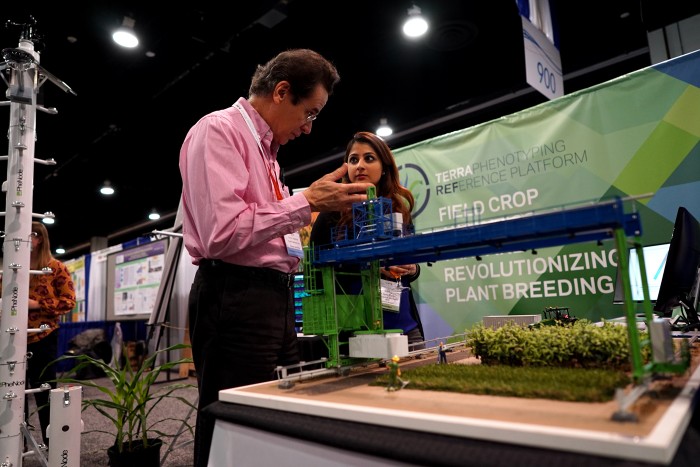Will ARPA-E Survive Trump’s Looming Budget Cuts?

The opening sessions of this week's ARPA-E Energy Innovation Summit amounted to a defense of federal funding for energy research in general—and ARPA-E in particular.
Eric Rohlfing, acting director of the moonshot investment arm of the Department of Energy, kicked off the conference near Washington, D.C., by announcing that 74 of the agency's projects have raised $1.8 billion in private sector funding and 56 have formed new companies. He was followed on the main stage by MIT president L. Rafael Reif, who stressed that government support is crucial for enabling the big, hard ideas in science to make the leap from academia to industry. He added that federal investments in early research are required to maintain the country’s competitive advantage in technology and science, and create future jobs.
"This is not a conservative or liberal point of view,” Reif said. “This is about the future of our nation."
Hanging over all the sessions was the looming question of whether this summit, or ARPA-E itself, will exist by this time next year. The Trump administration reportedly hopes to redirect $54 billion from most federal agencies to defense spending, and anything related to clean energy and climate change are obvious targets. ARPA-E staffers surely feel particularly threatened, as a 2016 Heritage Foundation report that's proven influential within Trump's circle called for eliminating the agency outright.
The fate of ARPA-E and federal energy funding in general was a common topic of discussion in the hallways of the conference. No one who spoke to MIT Technology Review was ready to definitively predict the agency's demise, in part because the Trump administration has proven so wildly unpredictable. But there is considerable concern about what will happen in the months ahead, and what it will mean for the pace of clean energy research.

Energy is now the biggest single research area at PARC, the famed Silicon Valley-based technology research institute, thanks to ARPA-E funding for a series of projects. "It's vital, it's critical," says Scott Elrod, director of PARC's Hardware Systems Laboratory. "We wouldn't have been able to go from our historical roots to energy without the support of this funding."
Deborah Stine, an associate director at the Scott Institute for Energy Innovation at Carnegie Mellon, thinks this may well be the last year for the summit, simply because it's a conspicuous event dedicated to clean energy. But she ultimately believes the agency will survive because it's proven crucial to the private sector, by providing earlier stage financing than companies are generally able or willing to.
"In order for it to survive, the industry that's here at the APRA-E event, that has been supporting it for all this time, needs to stand up and say, 'Look, we care about this,'" Stine says.
Keep Reading
Most Popular
Large language models can do jaw-dropping things. But nobody knows exactly why.
And that's a problem. Figuring it out is one of the biggest scientific puzzles of our time and a crucial step towards controlling more powerful future models.
How scientists traced a mysterious covid case back to six toilets
When wastewater surveillance turns into a hunt for a single infected individual, the ethics get tricky.
The problem with plug-in hybrids? Their drivers.
Plug-in hybrids are often sold as a transition to EVs, but new data from Europe shows we’re still underestimating the emissions they produce.
Stay connected
Get the latest updates from
MIT Technology Review
Discover special offers, top stories, upcoming events, and more.